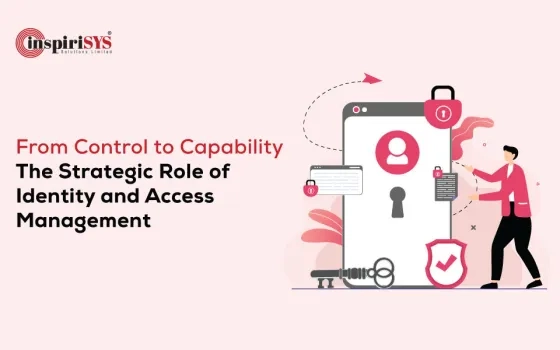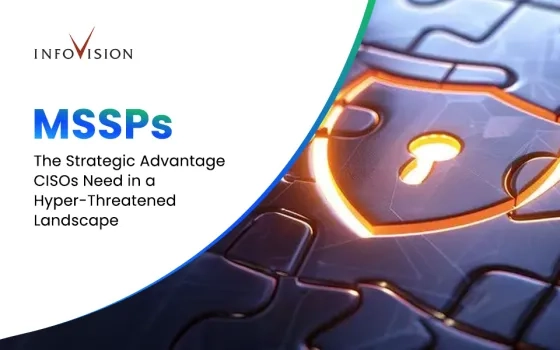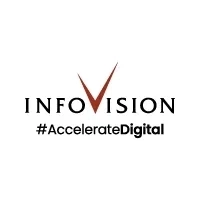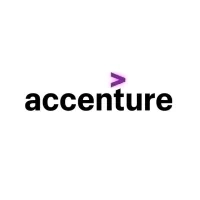As digital operations expand, enterprises are navigating increasingly fragmented access environments. Cloud-first deployments, distributed workforces, and partner ecosystems have stretched traditional identity controls beyond their limits. In this context, unregulated access and disjointed identity systems have become prime enablers of security incidents—many of which begin with compromised credentials.
Identity and Access Management (IDAM) addresses these vulnerabilities by providing a unified mechanism to manage and control access across users, devices, and systems. Beyond serving as a gatekeeper, IDAM reinforces the foundation for secure enterprise transformation, supporting risk reduction, policy enforcement, and audit readiness across the digital ecosystem.
Definition and Scope
Identity and Access Management (IDAM) refers to the integrated framework of technologies, protocols, and processes that define, manage, authenticate, and authorize user identities and their access to enterprise resources.
Its scope spans the entire lifecycle of an identity—onboarding, provisioning, authentication, access control, privilege elevation, monitoring, and deprovisioning. IDAM systems enforce who can access what, when, and under what conditions. This includes managing internal users such as employees, as well as external actors like partners, customers, devices, and applications.
Core Components of Identity and Access Management (IDAM)
A mature IDAM architecture is composed of interconnected capabilities that work together to protect identity profiles and control access to enterprise resources. These components not only secure user interactions but also ensure compliance, business continuity, and adaptability across diverse IT environments. The following are the foundational components of a comprehensive IDAM system:
1. Single Sign-On (SSO)
Single Sign-On simplifies access by allowing users to authenticate once and gain entry to multiple systems without repeated logins. It reduces password fatigue, enhances user productivity, and centralizes identity verification through trusted third-party authentication protocols. SSO lowers the risk of credential misuse and supports secure interoperability across integrated applications.
2. Multi-Factor Authentication (MFA)
MFA strengthens identity verification by requiring users to provide multiple forms of evidence: something they know (e.g., password), something they have (e.g., a code or token), and something they are (e.g., biometrics). It significantly reduces the risk of unauthorized access, especially in environments exposed to phishing, credential theft, or remote access vulnerabilities.
3. Privileged Access Management (PAM)
PAM enforces strict controls over accounts with elevated privileges—such as system administrators or users managing critical infrastructure. These accounts are high-value targets for attackers and internal misuse. PAM restricts and monitors their access, ensuring that privileged operations are traceable, time-bound, and policy-compliant.
4. Risk-Based Authentication
Risk-based authentication introduces adaptive security measures by evaluating contextual parameters like user location, device fingerprint, and IP reputation at the time of login. Based on risk scoring, it dynamically adjusts access decisions—ranging from seamless entry to requiring additional authentication or denying access outright.
5. Data Governance
Effective IDAM relies on accurate and well-managed identity data. Data governance ensures the quality, consistency, and integrity of identity-related data across systems. As identity decisions increasingly rely on AI and machine learning, data governance becomes essential to maintaining trust and accuracy in automation-driven access controls.
6. Federated Identity Management
Federated identity enables users to access multiple systems or services across organizational boundaries using a single set of credentials. By establishing trust relationships among identity providers and service providers, federated identity enhances user convenience and reduces the need for redundant identity verification across partner ecosystems.
7. Zero Trust Integration
IDAM is a critical enabler of Zero Trust architecture, which operates on the principle of “never trust, always verify.” In this model, every access request—regardless of origin—is authenticated, authorized, and continuously validated. IDAM enforces granular policies and real-time verification to align access decisions with Zero Trust principles.
8. Identity Governance and Administration (IGA)
IGA brings oversight and control to identity lifecycle management. It integrates identity provisioning, role assignment, attestation, and policy enforcement to ensure that users have appropriate access aligned with their roles. IGA also provides auditing and reporting capabilities necessary for regulatory compliance and risk mitigation.
Deployment Models and Technologies
As organizations navigate cloud transformation, workforce decentralization, and evolving threat landscapes, selecting the right Identity and Access Management (IDAM) deployment model—and supporting it with appropriate technologies—is critical to achieving security, scalability, and operational efficiency.
Deployment Models
1. Cloud-Based IAM (Identity as a Service – IDaaS)
Cloud-based IAM solutions offer flexible, subscription-based identity services hosted by third-party providers. They support secure access across devices and platforms—Windows, Mac, Linux, mobile—without the need for separate access systems. IDaaS simplifies access for remote employees, contractors, and customers, while reducing administrative complexity. Tasks such as user provisioning, access governance, and authentication are centrally managed, improving consistency and responsiveness.
2. Hybrid IAM
Hybrid IAM integrates on-premises identity infrastructure with cloud-based identity services. This model allows organizations to extend the capabilities of legacy systems while enabling secure access to cloud-native applications. It supports synchronized identities, unified access control, and phased migration—enabling businesses to modernize without disrupting core operations. Features like context-aware authentication and role-based access control help manage distributed workloads and minimize security risks.
3. On-Premises IAM
Although declining in preference, on-premises IAM remains relevant for organizations with stringent data residency, compliance, or control requirements. These systems require internal infrastructure, ongoing maintenance, and dedicated personnel, but offer high customization and direct oversight over identity processes.
Technologies
Security Assertion Markup Language (SAML)
SAML enables Single Sign-On (SSO) by allowing authentication data to be securely exchanged between an identity provider and multiple service providers. Once a user is authenticated, SAML facilitates trusted access to connected applications, regardless of platform or operating system—by transmitting a verified assertion of identity. This cross-platform compatibility is essential for unified access across enterprise environments.
OpenID Connect (OIDC)
OIDC builds on the OAuth 2.0 framework to add identity verification through secure token exchange. These tokens, issued by an identity provider, contain user information such as name, email, or profile details, enabling seamless authentication across mobile apps, web services, and consumer-facing platforms. OIDC is lightweight, easy to integrate, and widely adopted for user-centric identity scenarios.
System for Cross-Domain Identity Management (SCIM)
SCIM standardizes the automation of user identity provisioning and deprovisioning across applications and service providers. It allows organizations to create, update, and manage user identity data from a central IAM system, eliminating the need to manually create accounts in each application. SCIM ensures consistent identity governance while supporting efficient access lifecycle management.
Key Benefits of Identity and Access Management
A well-implemented Identity and Access Management (IDAM) system delivers strategic advantages across security, governance, compliance, and growth readiness. Below are the core benefits organizations can realize through IDAM adoption:
1. Administrative Efficiency
Automated provisioning and centralized access management significantly reduce time spent on routine identity-related tasks, allowing IT teams to focus on strategic initiatives rather than manual interventions.
2. Security Enhancement
Granular access control, coupled with adaptive authentication mechanisms, strengthens an organization’s ability to prevent unauthorized access and detect identity-based threats before they escalate.
3. Cost Optimization
Minimizing the risk of data breaches, regulatory non-compliance, and operational downtime helps organizations avoid remediation costs, legal penalties, and reputational damage—resulting in long-term financial efficiency.
4. Policy Alignment
Centralized governance ensures that access permissions reflect organizational roles and regulatory mandates, reducing inconsistencies and simplifying compliance audits across systems and departments.
5. Access Scalability
Support for dynamic user roles, third-party access, and cloud expansion enables organizations to manage identity across growing ecosystems without compromising security or performance.
6. Visibility into Access Activity
Comprehensive monitoring tools offer real-time insight into user behavior, access patterns, and permission changes, empowering teams to respond swiftly to anomalies and enforce accountability.
7. Secure Collaboration
Controlled sharing of digital resources across users and departments enables trusted information exchange, fostering cross-functional cooperation without exposing sensitive data to risk.
Best Practices for Effective Identity and Access Management
For Identity and Access Management (IDAM) to deliver sustainable value, its implementation must be structured, context-aware, and continuously refined. The following best practices guide organizations in strengthening identity security while supporting operational demands.
1. Align IDAM Strategy with Business Objectives
Treat IDAM as a strategic function—not an isolated IT initiative—by mapping identity governance to business goals, compliance obligations, and risk management priorities. This ensures access policies, role structures, and authentication models actively support the organization’s evolving digital landscape.
2. Build for Scalability and Resilience
Design the IDAM infrastructure to accommodate organizational growth, multi-cloud environments, and user diversity. Using interoperable standards (e.g., SAML, OIDC, SCIM), modular configurations, and redundancy safeguards enables systems to remain responsive under increased demand or disruption.
3. Implement in Phases for Controlled Adoption
Deploy IDAM in prioritized stages—starting with high-risk users or critical systems—to validate performance and minimize disruption. A phased approach allows time for technical tuning, user adaptation, and feedback-based refinement, ensuring higher adoption and system stability.
4. Educate and Involve Stakeholders
Train employees, IT teams, and decision-makers on their roles in maintaining secure identity practices. Awareness programs should cover password hygiene, MFA usage, and access request protocols, fostering a culture of shared responsibility and reducing avoidable access violations.
5. Continuously Monitor and Improve
Establish monitoring mechanisms to track access anomalies, policy deviations, and system vulnerabilities. Use audit insights, incident data, and regulatory updates to periodically review and enhance IDAM configurations—ensuring they remain effective as risks and technologies evolve.
Conclusion
In environments where systems and users are increasingly interlinked, managing identity and access with precision is key to containing risk and maintaining operational integrity.
With credential-based threats on the rise, identity remains a frequent point of exploitation. Without structured access governance, organizations are left exposed to internal missteps and external compromise. IDAM directly addresses this by enabling real-time visibility, dynamic control, and consistent enforcement across platforms.
More than preventing breaches, IDAM helps organizations meet regulatory demands, streamline user lifecycle management, and scale securely. Its effectiveness lies in continuous alignment—with business needs, regulatory change, and the evolving threat surface.
For organizations committed to resilient digital growth, IDAM is not an option—it is a prerequisite.


















